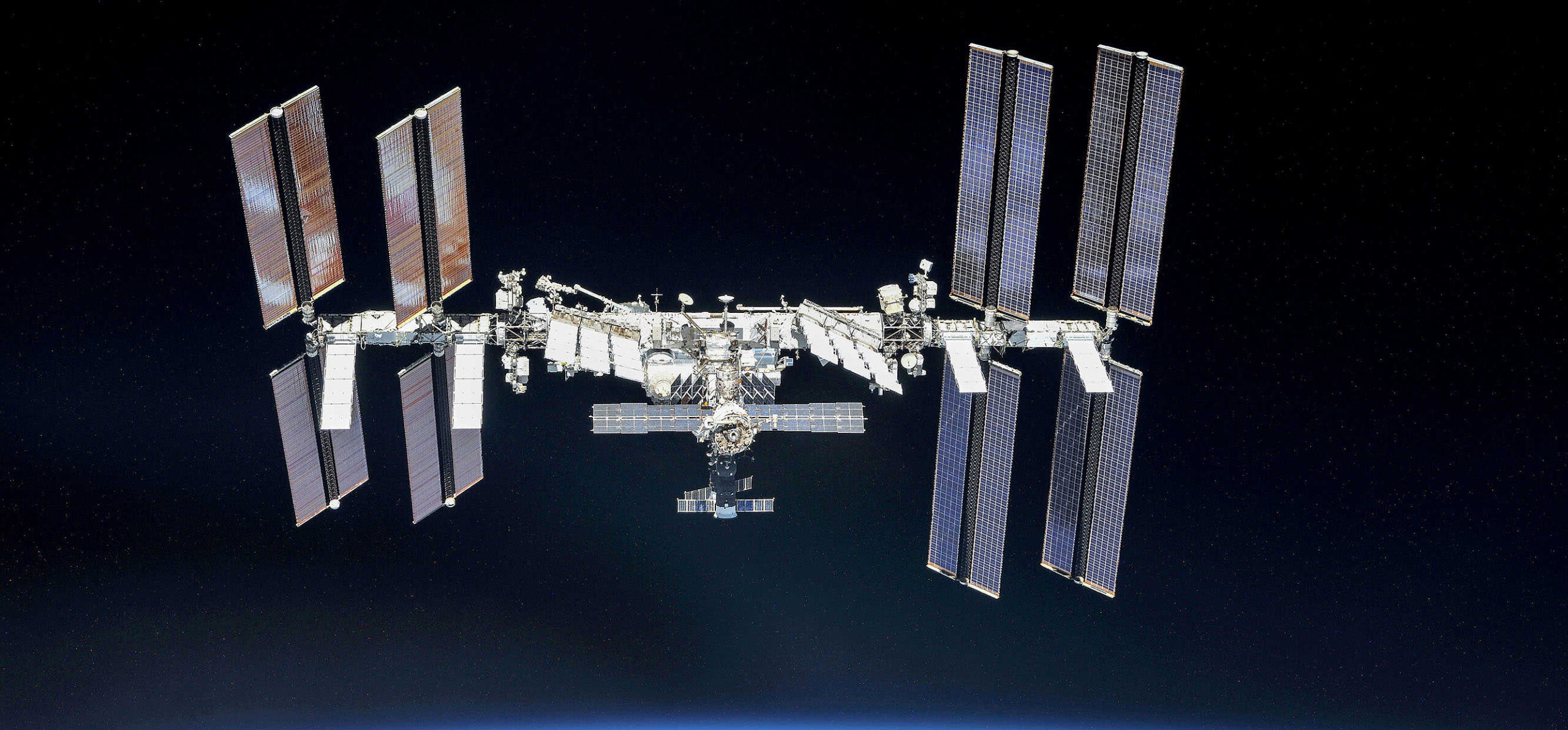INTERNATIONAL SPACE STATION & SANCTIONS ON RUSSIA
INTERNATIONAL SPACE STATION & SANCTIONS ON RUSSIA

CONTEXT
- Even though the U.S. imposed sanctions on Russia including a ban on transfer of technology, the scheduled missions for a transfer of crew on the ISS between the two countries seem to be unaffected.
- If Russia backs out of the mission, SpaceX’s dragon module and Boeing’s Starliner are the other two options which can dock with the ISS.
- Russia’s part in the collaboration of the ISS is the module responsible for making course corrections to the orbit of the space station. They also ferry astronauts to and from the ISS.
WHAT IS ISS?
- The ISS is a manmade space station or artificial satellite that is habitable for humans in space
- It is in the low-earth orbit and there are astronauts living onboard the space station conducting experiments on earth science, biology, biotechnology, astronomy, microgravity, meteorology, physics, etc.
- The astronauts generally don’t live on the station for more than six months at a time.
- The first piece of equipment of the ISS was launched in 1998 and other parts and modules were added and assembled in space at different times.
- The first crew arrived on the ISS in 2000 and since then it has always been manned by astronauts.
- The ISS was developed and built by five space agencies namely, NASA (USA), Roscosmos (Russia), European Space Agency (ESA-Europe), JAXA (Japan) and the Canadian Space Agency (CSA-Canada).
- The ISS is usually at an altitude between about 200 km and 400 km and weighs more than 400,000 kg. It is 73 m long and 109 m wide.
- The ISS orbits the earth at about 5 miles per second and makes 15.5 orbits per day. It takes roughly 93 minutes for it to make one revolution around the earth.
- According to NASA, more than 240 people from 19 nations have visited the space station. More than 3000 educational and research investigations have been carried out in various fields.
- Astronauts conduct spacewalks (that is, stepping out of the ISS onto space) and conduct maintenance and repair works on the station. There have been over 200 spacewalks until now.
What is Russia’s role in maintaining the ISS?
- The ISS is built with the co-operation of scientists from five international space agencies — NASA of the U.S., Roscosmos of Russia, JAXA of Japan, Canadian Space Agency and the European Space Agency.
- Each agency has a role to play and a share in the upkeep of the ISS. Both in terms of expense and effort, it is not a feat that a single country can support.
- Russia’s part in the collaboration is the module responsible for making course corrections to the orbit of the ISS.
- They also ferry astronauts to the ISS from the Earth and back. Until SpaceX’s dragon spacecraft came into the picture the Russian spacecrafts were the only way of reaching the ISS and returning.
Why does the orbit of the ISS need to be corrected?
- Due to its enormous weight and the ensuing drag, the ISS tends to sink from its orbit at a height of about 250 miles above the Earth.
- It has to be pushed up to its original line of motion every now and then.
- Approximately once a month this effort has to be made. It is not necessarily a regular operation, and may be missed once and compensated for later.
- The other reason for altering the path of the ISS is to avoid its collision with space debris, which can damage the station.
- These manoeuvres need to be done as and when the debris is encountered.
What is the extent of effort and expense involved in this?
- Manoeuvering the ISS is expensive. In a year, 7-8 tonnes of fuel may need to be spent, with each manoeuvre costing nearly a tonne of fuel.
- If a manoeuvre is put off for later, the ISS may sink a little more and the delayed operation would cost more as a larger correction needs to be made.
If Russia should back out of the effort, are there spacecrafts that can substitute?
There are right now two possibilities. SpaceX’s dragon module and Boeing’s Starliner can dock with the ISS. Starliner also has the capacity to carry, say, ten tonnes of fuel.
What is the likelihood of Russia backing out?
- Though there have been previous occasions when conflicts have risen between Russia and the U.S., the operation of the ISS has not been interrupted.
- The mission means to take up two Russians and an American astronaut, and the preparatory work is in progress.
- On March 30, it is planned that the mission will return an American astronaut to Earth from the ISS. These seem to be going on as per plan.
Is it true that Russia does not have the risk of the ISS crashing down on their country?
- The orbit of the ISS does not fly over the Russian territory mostly. Places that are closer to the equator run a greater risk of it falling in their domain.
- The orbit is at about 50 degrees and so most probably, the ISS will fall in that level. But this is only a probability, as it can move or disintegrate.
But in case of this eventuality, people in the ISS will be brought back, modules can be detached thereby making it much smaller which will ensure that it disintegrates before touching the earth.

